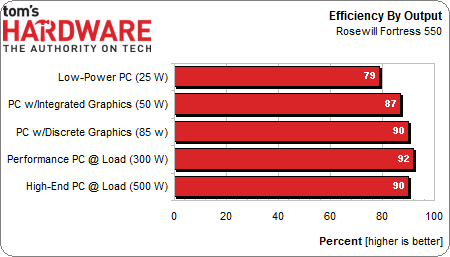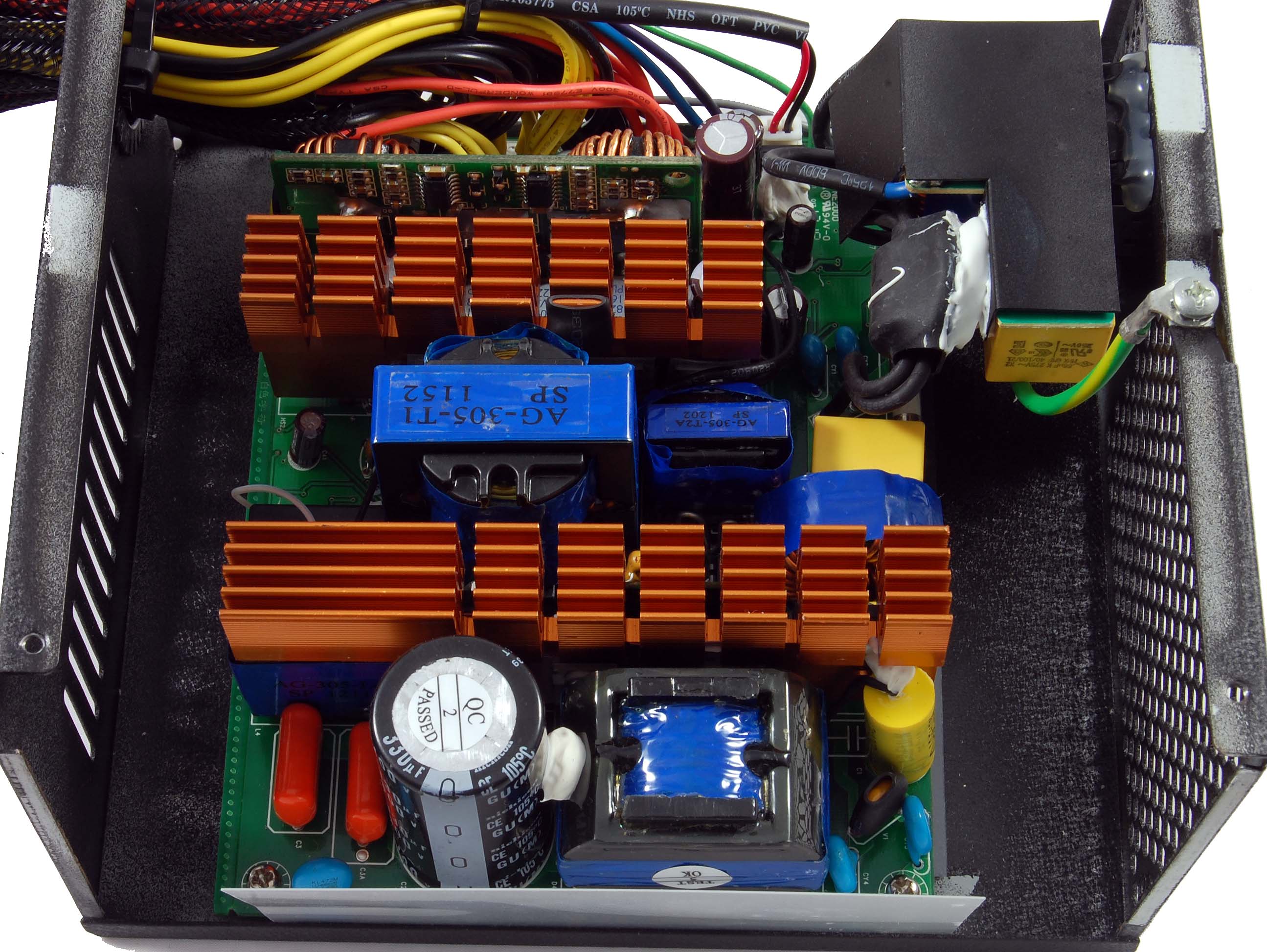Five 550 And 600 W 80 PLUS Platinum Power Supplies, Tested
A good power supply doesn't just provide you with ample output. Increasingly, vendors have put a bigger emphasis on delivering power more efficiently, too. We're testing five 80 PLUS Platinum-rated power supplies in the 550- to 600-watt range.
Results: Rosewill Fortress 550
Efficiency According to the 80 PLUS Specification
Efficiency by Output Power
Our test suite doesn’t expose any significant differences between the Kingwin and Rosewill products. The efficiency values for both PSUs are really close when we perform our 80 PLUS Platinum compliance tests, and the two competing power supplies rightfully bear the coveted logo.
At low load, Rosewill's Fortress pulls ahead of the Kingwin supply by being one or two percentage points more efficient. At 25 W, the Fortress 550's efficiency is two percentage points above the Lazer Platinum 550 W's at 79 percent. Perhaps the fact that this power supply has no modular cabling helps. After all, each connector ever so slightly decreases efficiency.
When we measure the hold-up time, Rosewill's Fortress 550 achieves 17 ms, which is slightly less than the average of the other supplies, but still in compliance with the 16 ms demanded by the ATX specification. Like the other power supplies in this round-up, the Fortress passes our overload test, which subjects the power supply to 110% of its nominal load.
At the end of the suite, we check ripple and noise to determine the quality of the DC output voltage, generated from an intermediate AC voltage. The oscilloscope shows that the Rosewill Fortress sports significant ripples, which could be passable as long as they stay within the ATX spec. However, we measure a maximum of 170 mV on the +12 V rail, exceeding the ATX limit of 120 mV. Unfortunately, even the 149 mV average is too high.
A Closer Look at the PCB
Get Tom's Hardware's best news and in-depth reviews, straight to your inbox.
The Fortress 550's main PCB is smaller than the one inside Kingwin's Lazer, most likely because Rosewill doesn't employ modular cables. Although both PSUs offer identical tech specs, their PCB layouts are not the same.
First, Rosewill’s input filter is located at the mains receptacle. This small PCB sports just two X and Y capacitors each, along with a choke coil. The rest of the input filter consists of two more X and two more Y capacitors, along with an MOV seated behind the bridge rectifier. The topology is LLC, and all components are sourced from Japan. The soldering quality looks OK, but it is by no means perfect.
Current page: Results: Rosewill Fortress 550
Prev Page Rosewill Fortress 550 Next Page Test Setup, Hold-Up Time, And Inrush Current


